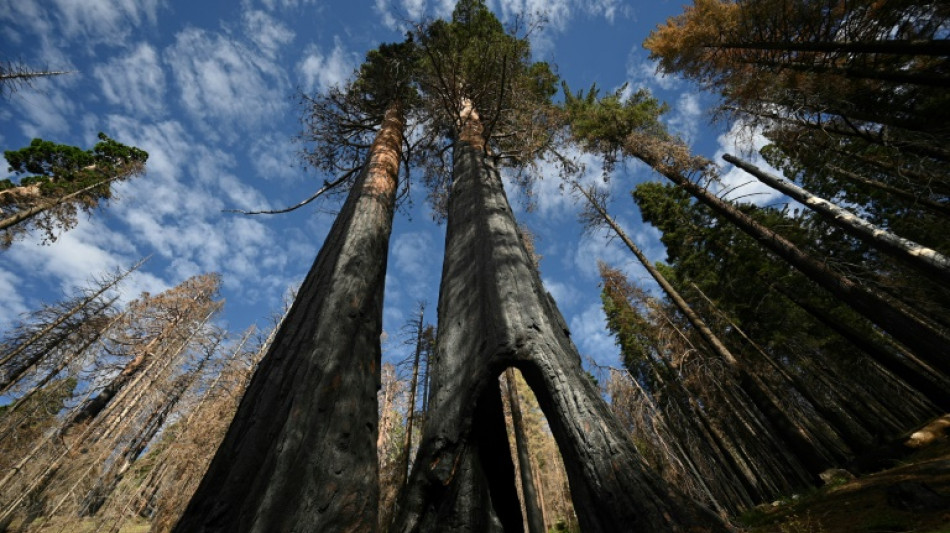
-
 Why SpaceX IPO plan is generating so much buzz
Why SpaceX IPO plan is generating so much buzz
-
Thailand continues Cambodia strikes despite Trump truce calls

-
 US envoy to meet Zelensky, Europe leaders in Berlin this weekend
US envoy to meet Zelensky, Europe leaders in Berlin this weekend
-
North Korea acknowledges its troops cleared mines for Russia

-
 US unseals warrant for tanker seized off Venezuelan coast
US unseals warrant for tanker seized off Venezuelan coast
-
Cambodia says Thailand still bombing hours after Trump truce call

-
 Machado urges pressure so Maduro understands 'he has to go'
Machado urges pressure so Maduro understands 'he has to go'
-
Best Gold Investment Companies in USA Announced (Augusta Precious Metals, Lear Capital, Robinhood IRA and More Ranked)

-
 Leinster stutter before beating Leicester in Champions Cup
Leinster stutter before beating Leicester in Champions Cup
-
World stocks mostly slide, consolidating Fed-fuelled gains

-
 Crypto firm Tether bids for Juventus, is quickly rebuffed
Crypto firm Tether bids for Juventus, is quickly rebuffed
-
Union sink second-placed Leipzig to climb in Bundesliga

-
 US Treasury lifts sanctions on Brazil Supreme Court justice
US Treasury lifts sanctions on Brazil Supreme Court justice
-
UK king shares 'good news' that cancer treatment will be reduced in 2026

-
 Wembanyama expected to return for Spurs in NBA Cup clash with Thunder
Wembanyama expected to return for Spurs in NBA Cup clash with Thunder
-
Five takeaways from Luigi Mangione evidence hearings

-
 UK's king shares 'good news' that cancer treatment will be reduced in 2026
UK's king shares 'good news' that cancer treatment will be reduced in 2026
-
Steelers' Watt undergoes surgery to repair collapsed lung

-
 Iran detains Nobel-prize winner in 'brutal' arrest
Iran detains Nobel-prize winner in 'brutal' arrest
-
NBA Cup goes from 'outside the box' idea to smash hit

-
 UK health service battles 'super flu' outbreak
UK health service battles 'super flu' outbreak
-
Can Venezuela survive US targeting its oil tankers?

-
 Democrats release new cache of Epstein photos
Democrats release new cache of Epstein photos
-
Colombia's ELN guerrillas place communities in lockdown citing Trump 'intervention' threats

-
 'Don't use them': Tanning beds triple skin cancer risk, study finds
'Don't use them': Tanning beds triple skin cancer risk, study finds
-
Nancy aims to restore Celtic faith with Scottish League Cup final win

-
 Argentina fly-half Albornoz signs for Toulon until 2030
Argentina fly-half Albornoz signs for Toulon until 2030
-
Trump says Thailand, Cambodia have agreed to stop border clashes

-
 Salah in Liverpool squad for Brighton after Slot talks - reports
Salah in Liverpool squad for Brighton after Slot talks - reports
-
Marseille coach tips Greenwood as 'potential Ballon d'Or'

-
 Draw marks 'starting gun' toward 2026 World Cup, Vancouver says
Draw marks 'starting gun' toward 2026 World Cup, Vancouver says
-
Thai PM says asked Trump to press Cambodia on border truce

-
 Salah admired from afar in his Egypt home village as club tensions swirl
Salah admired from afar in his Egypt home village as club tensions swirl
-
World stocks retrench, consolidating Fed-fuelled gains

-
 Brazil left calls protests over bid to cut Bolsonaro jail time
Brazil left calls protests over bid to cut Bolsonaro jail time
-
Trump attack on Europe migration 'disaster' masks toughening policies

-
 US plan sees Ukraine joining EU in 2027, official tells AFP
US plan sees Ukraine joining EU in 2027, official tells AFP
-
'Chilling effect': Israel reforms raise press freedom fears

-
 Iran frees child bride sentenced to death over husband's killing: activists
Iran frees child bride sentenced to death over husband's killing: activists
-
No doubting Man City boss Guardiola's passion says Toure

-
 Youthful La Rochelle name teen captain for Champions Cup match in South Africa
Youthful La Rochelle name teen captain for Champions Cup match in South Africa
-
World stocks consolidate Fed-fuelled gains

-
 British 'Aga saga' author Joanna Trollope dies aged 82
British 'Aga saga' author Joanna Trollope dies aged 82
-
Man Utd sweat on Africa Cup of Nations trio

-
 EU agrees three-euro small parcel tax to tackle China flood
EU agrees three-euro small parcel tax to tackle China flood
-
Taylor Swift breaks down in Eras documentary over Southport attack

-
 Maresca 'relaxed' about Chelsea's rough patch
Maresca 'relaxed' about Chelsea's rough patch
-
France updates net-zero plan, with fossil fuel phaseout

-
 Nowhere to pray as logs choke flood-hit Indonesian mosque
Nowhere to pray as logs choke flood-hit Indonesian mosque
-
In Pakistan, 'Eternal Love' has no place on YouTube


Helping or hindering? US scientists debate how to save giant sequoias
When ferocious wildfires tore through California's prized giant sequoia forests, they killed towering trees that have lived there for thousands of years -- and perhaps changed the nature of the groves forever.
Now the US National Park Service (NPS) wants to give Mother Nature a helping hand, planting lab-grown seedlings it says will kick-start the return of these magnificent stands.
"The goal is to reestablish enough sequoias in the first few years after fire so that we have trees 60, 100, 400 years from now," says Christy Brigham, chief of resources management and science at Sequoia and Kings Canyon National Parks.
Giant sequoias are truly impressive -- so disproportionately huge they look like holdouts from the age of the dinosaurs.
The biggest rise taller than 300 feet (90 meters) with trunks almost 30 feet in diameter; the oldest sprouted more than 3,200 years ago.
Once widespread, they are now only found in a narrow range in California.
- Climate change and fire suppression -
"When you see a sequoia, they're these huge, quirky, broken old things, and you recognize them as an individual that's lived a really long time," Brigham told AFP in the heart of California's Redwood Mountain Grove.
"That helps us think about long timescales when we're thinking about our actions, things like climate change and forest management."
It's these two issues that have combined to bring the sequoias to their current pass.
Decades of well-intentioned fire-suppression policies have left many sequoia groves stuffed with unburned smaller trees and shrubs.
When human-caused climate change supercharged a drought last decade, this greenery dried out, becoming a tinderbox ready to explode.
Giant sequoia need fire to reproduce -- the flames clear and nourish the soil, making it ready to receive the seeds the heat has prised out of their cones.
But, the NPS says, the fires of 2020 and 2021 were just too much, killing as many as 14,000 adult trees -- up to a fifth of all the specimens on the planet.
- Dead, blackened spires -
"What we saw in those groves is that the fire just roared in there," says Brigham. "It got into the canopy of the sequoias, and torched these trees that are 200 feet tall, which we've never seen before."
Instead of the thriving scenes of rebirth they had hoped for, forest managers who ventured into the groves found mostly dead, blackened spires.
"We saw very few cones and we saw almost no seedlings, which is unheard of," says Brigham.
The situation is so bad in six groves in Kings Canyon and Sequoia National Parks that there aren't enough living trees or viable seedlings to keep the population going, the NPS says.
They fear that without help, these spaces could be taken over by shrubs and faster-growing pines and oaks.
The plan, which Brigham and her colleagues hope will be given the green light in October, is to plant hundreds of cultivated seedlings per acre (hectare).
Work crews will be trekking in on mules or using helicopters to drop off supplies, in a $4.4 million project that envisages several years of planting and decades of monitoring.
Andrew Bishop, a restoration ecologist at the NPS, says two or three years on from the fires there are some self-seeded plants, but nowhere near enough.
"The critical concern is, we are standing in the middle of a 400-acre block of high severity fire, and we have no living reproductive giant sequoias.
"When there are future fires, there's not a chance, there's no insurance policy.
"These groves are not going to recover without restoration."
- 'Serious risks' -
Not everyone agrees.
"These groves do not need to be planted, and there are serious downsides and risks to planting," says Chad Hanson, a research ecologist and the director of the John Muir Project, an environmental campaign group.
Hanson and his team of researchers say the NPS has undercounted the number of natural seedlings, in some cases by thousands per acre.
"There are so many sequoia seedlings in these high intensity fire patches that it's hard to walk," he said.
Sending in large teams of workers and mules would likely result in crushing the self-seeded plants.
"They're probably going to kill a lot more than they even plan to plant."
Nursery-grown seedlings also bring with them the risk of root pathogens the groves have never seen before, says Hanson, which could compromise the health of reproductive adult trees.
And if the replanting program doesn't work the way the NPS envisages, Hanson fears authorities will propose ever-more aggressive interventions.
"That may include what they call thinning -- which in most cases is a euphemism for some type of logging -- and spraying herbicides and then planting again," he said.
None of which should be happening in a wilderness, where the most complete and fully functioning ecosystems are found.
"When humans intervene, we are rarely very helpful, even when we say we're going to be helpful," he said.
But for Brigham, at the NPS, the idea that this wilderness is untouched is itself fallacious.
Fire suppression over the last few decades left fuel that shouldn't be there, and human activity is making the planet hotter, altering the forest's ecosystem.
"Those two things together mean that we've already affected this wilderness area," she says.
"It's not nature doing its own thing without people, and it's had a result here that if we do not intervene, we will lose portions of this forest."
O.Karlsson--AMWN


